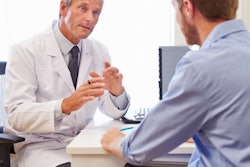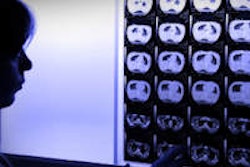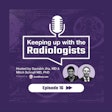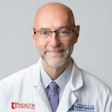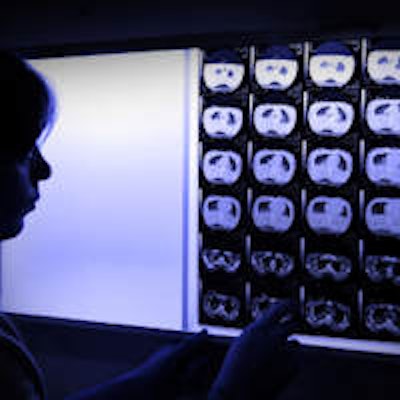
As medicine continues to promote more valued-based outcomes, radiologists are being asked to take more active roles in patient care. A new program at UMass Memorial Medical Center is helping radiologists come out of their reading rooms to better connect with patients.
Through simulated communication skills training, the Worcester, MA, facility exposes doctors to a variety of staged scenarios to teach them how to act and react in the patient's best interest. After an inaugural session last year, the program received positive reviews from participants, who say their communication skills have improved greatly and they feel more comfortable and confident when guiding patients through procedures, explaining test results, or giving bad news.
"It's the way medicine in general is moving: Radiology is becoming more patient-centered and aligned with the rest of medicine," said Dr. Carolynn DeBenedectis, a fourth-year attending radiologist and breast imager at UMass Medical and co-developer of the program. "This is the way things need to move. I think more programs will make [communication skills] more a part of their formal residency training."
Direct involvement
Part of the catalyst for the simulated communication skills training is the American College of Radiology's Imaging 3.0 initiative, which is designed, in part, to have radiologists become more involved in patient care. In addition, the Accreditation Council for Graduate Medical Education (ACGME) is strongly encouraging radiology residents to be trained and evaluated in communication skills to improve their interactions with patients and colleagues.
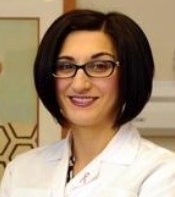 Dr. Carolynn DeBenedectis from UMass Memorial Medical Center.
Dr. Carolynn DeBenedectis from UMass Memorial Medical Center.There is merit to both campaigns. Previous research shows that physicians rehearsing communication scenarios through role-play allows for self-reflection and improvement of those skills (Oncologist, March 2012, Vol. 17:3, pp. 373-383).
"Radiologists really want to contribute to the patient-centered care model that is becoming the norm in medicine," DeBenedectis added. "I think the only way to appropriately do it is to formally train residents as well as the practicing clinicians, because if we are not trained, we can't know how to do it."
Skills agenda
Five first-year and three fourth-year radiology residents participated in last year's pilot program. The curriculum, called "Coming Out of the Dark," features six baseline communication scenarios, with actors playing the roles of patients during the approximately four-hour session.
The simulated situations are as follows:
- Error and apology
- Delivering bad news
- Canceling examinations/procedures
- Counseling on radiation risk
- Giving results in pediatric imaging
- Dealing with an angry referring physician
Residents' performances are videotaped at the University of Massachusetts Medical School's state-of-the-art Interprofessional Center for Experiential Learning and Simulation (iCELS).
After the first session, participants are debriefed, and they are evaluated by the patient/actors as well as other residents who run the program and have been trained in communication skills. Participants are graded using the Gap-Kalamazoo Communication Skills (GKCS) assessment form.
The same participants return two weeks later for another four-hour training session, at which time they are graded again.
At the RSNA 2015 meeting, DeBenedectis reported that the average GKCS score for all of the residents improved to 79% (range, 66%-86%) in the second session, compared with 74% (range, 65%-82%) after the initial session.
The results also showed that fourth-year residents outperformed their first-year counterparts. The average score for fourth-year residents in the first session was 77%, compared with 72% for first-year residents. In the second session, the average fourth-year resident score was 81%, compared with 76% for first-year residents.
There was one scenario, however, in which the overall performances of the participants decreased the second time around. The first scenario involved counseling for an obvious breast cancer, while the second simulation addressed inconclusive breast calcifications.
DeBenedectis said the second scenario is a "much more difficult conversation to have. There was more ambiguity in the conversation, because it was an unknown. I think it was a different degree of difficulty in the second case and it gave [residents] a harder time."
The real world
Dr. Eileen Delaney, a second-year radiology resident at UMass Medical, participated in the pilot program and has since had the opportunity to use her newly gained communication skills in the clinical setting.
During her stint in the emergency room, a patient was concerned about the potential radiation exposure from a CT scan. Coincidentally, the real-life situation mirrored one of the simulated sessions.
"It was helpful to have practiced that beforehand to explain to the patient what the real risks were, why we thought the CT scan was worth the risk, and how it would benefit [the patient] in the short term and long term," she said.
Delaney also often collaborates on medical procedures, explaining to patients what will take place, answering all of their questions, and speaking with them throughout the process to recovery.
"The most valuable aspect of the training is to have the opportunity to identify issues that may come up during the course of my career as a resident or an attending," she said. "I can see the types of issues I might experience and have the time to formulate my thoughts. When I come to a situation with a real patient, I am able to give them the best service possible."
Advancing the program
Following the success of the first training forum, DeBenedectis and colleagues began to train attending physicians in January, and they plan to commence another round of classes in March and April with more first-year and fourth-year radiologists.
"Now that we have done the resident training sessions and they have been so successful and well-received, we have decided to take the radiologists who perform image-guided procedures," she said. "Those are the doctors with the most patient contact, and [we'll] give them a workshop with CME credit on how to communicate with patients during key parts of image-guided procedures and difficult situations."
The goal is to train nine to 10 residents each year. It could be a long-term process to bring all radiologists and residents into the fold, DeBenedectis said, given that "radiology residency programs generally cap out at about eight to 10 residents per class."
The hope is that eventually other programs will bring their residents to the UMass simulation training center as well.
"We would love to open the program to other people to come and take the course at UMass," DeBenedectis said. "If that is not feasible, we would love to train other people at other programs who may have the facility and programs to run these workshops themselves."




